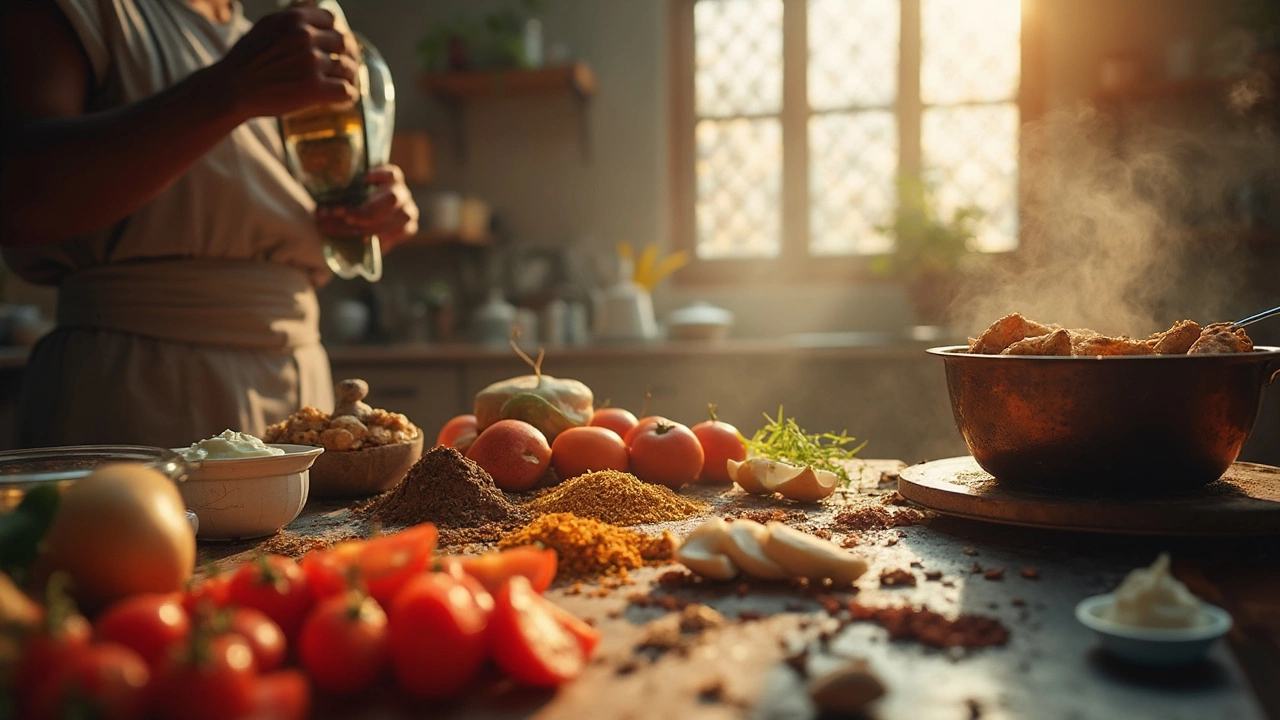Indian Restaurant Curry: What Makes It Stand Out
When you think about Indian restaurant curry, a flavorful dish served in Indian eateries, known for its blend of spices, herbs, and often a rich sauce. Also known as restaurant-style curry, it brings together regional spice blends, cooking techniques, and the atmosphere of a bustling kitchen.
One of the core curry ingredients, the spices, aromatics, and base liquids that build flavor in any Indian curry includes mustard seeds, cumin, coriander, ginger, garlic, and chilies. These ingredients form the backbone that lets chefs adjust heat, depth, and aroma on the fly. Another key factor is creaminess, the smooth, velvety texture achieved with dairy, nuts, or coconut milk. Creaminess balances heat and adds body, turning a simple broth into a luxurious sauce. Finally, turmeric, the golden spice that lends color, earthy flavor, and health benefits is often a non‑negotiable base, but many chefs experiment with turmeric substitutes like saffron or paprika to tweak color and taste without losing authenticity.
How These Elements Shape the Restaurant Experience
In a restaurant setting, consistency matters. Chefs use a standardized spice mix—sometimes called a masala—to ensure every plate of Indian restaurant curry hits the same flavor target. This masala typically combines the core curry ingredients in precise ratios, a practice that makes scaling up for large crowds doable. The creaminess factor is adjusted by the choice of base: a North Indian butter chicken will lean on cream and yogurt, while a South Indian fish curry might rely on coconut milk for that signature silky finish. When turmeric isn’t available or when diners request a milder hue, chefs turn to alternatives such as annatto or a pinch of smoked paprika, keeping the dish’s visual appeal while respecting dietary needs.
All these pieces—ingredients, texture, color—interact in predictable ways. A well‑balanced curry encompasses aromatic spices, requires a proper cooking technique to release flavors, and benefits from a creamy medium to carry heat. Understanding this trio helps home cooks replicate that restaurant vibe without the pressure of a commercial kitchen.
Below you’ll find a hand‑picked collection of articles that walk you through each of these aspects. From mastering the perfect spice blend to achieving that dream‑like creaminess, the posts are packed with practical tips you can test tonight. Dive in and start cooking restaurant‑quality curry at home.

How Indian Restaurants Make Curry So Thick: The Secrets Behind Perfect Chicken Curry
Ever wondered why chicken curry from Indian restaurants turns out so thick and rich compared to homemade versions? This article uncovers the simple but game-changing tricks Indian chefs use to achieve that perfect, velvety curry texture. We'll break down what really goes into those silky sauces and how you can use those methods in your own kitchen. Get ready to level up your curry game with practical tips and step-by-step explanations. Ditch the guesswork and get results that taste just like a good dhaba or your favorite local Indian eatery.